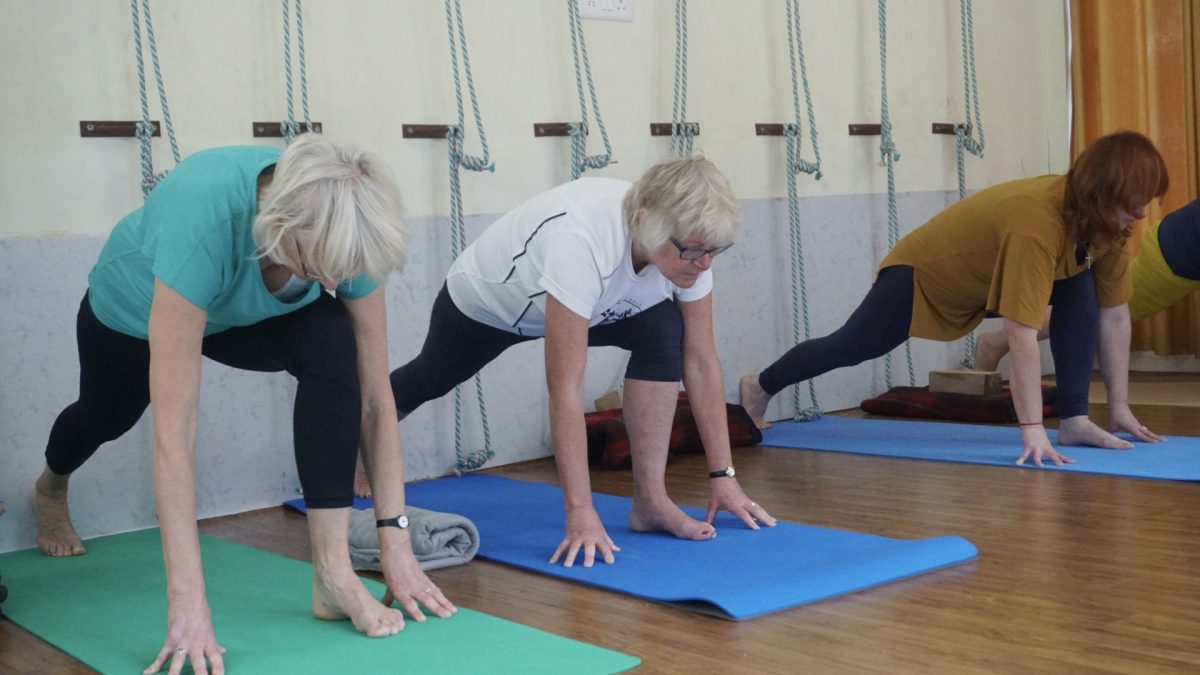Physical fitness authorities seem to have fallen into the same trap as the nutrition authorities, recommending what they think may be achievable, rather than simply informing us of what the science says and letting us make up our own minds.
Researchers who accept grants from The Coca-Cola Company may call physical inactivity “the biggest public health problem of the 21st century,” but, in actually, physical inactivity ranks down at number five in terms of risk factors for death in the United States and even lower in terms of risk factors for disability, as you can see at 0:17 in my video How Much Should You Exercise? What’s more, inactivity barely makes the top ten globally. As we’ve learned, diet is our greatest killer by far, followed by smoking.
Of course, that doesn’t mean you can just sit on the couch all day. Exercise can help with mental health, cognitive health, sleep quality, cancer prevention, immune function, high blood pressure, and life span extension, topics I cover in some of my other videos. If the U.S. population collectively exercised enough to shave just 1 percent off the national body mass index, 2 million cases of diabetes, one and a half million cases of heart disease and stroke, and 100,000 cases of cancer might be prevented.
Ideally, how much should we exercise? The latest official “Physical Activity Guidelines for Americans” recommends adults get at least 150 minutes a week of moderate aerobic exercise, which comes out to be a little more than 20 minutes a day. That is actually down from previous recommendations from the Surgeon General, as well as from the Centers for Disease Control and Prevention (CDC) and the American College of Sports Medicine, which jointly recommend at least 30 minutes each day. The exercise authorities seem to have fallen into the same trap as the nutrition authorities, recommending what they think may be achievable, rather than simply informing us what the science says and letting us make up our own minds. They already emphasize that “some” physical activity “is better than none,” so why not stop patronizing the public and just tell everyone the truth?
As you can see at 2:16 in my video, walking 150 minutes a week is better than walking 60 minutes a week, and following the current recommendations for 150 minutes appears to reduce your overall mortality rate by 7 percent compared with being sedentary. Walking for just 60 minutes a week only drops your mortality rate about 3 percent, but walking 300 minutes weekly lowers overall mortality by 14 percent. So, walking twice as long—40 minutes a day compared with the recommended 20 daily minutes—yields twice the benefit. And, an hour-long walk each day may reduce mortality by 24 percent. I use walking as an example because it’s an exercise nearly everyone can do, but the same applies to other moderate-intensity activities, such as gardening or cycling.
A meta-analysis of physical activity dose and longevity found that the equivalent of about an hour a day of brisk walking at four miles per hour was good, but 90 minutes was even better. What about more than 90 minutes? Unfortunately, so few people exercise that much every day that there weren’t enough studies to compile a higher category. If we know 90 minutes of exercise a day is better than 60 minutes, which is better than 30 minutes, why is the recommendation only 20 minutes? I understand that only about half of Americans even make the recommended 20 daily minutes, so the authorities are just hoping to nudge people in the right direction. It’s like the Dietary Guidelines for Americans advising us to “eat less…candy.” If only they’d just give it to us straight. That’s what I try to do with NutritionFacts.org.
Most of the content in my book How Not to Die came from my video research, but this particular video actually sprung from the book. I wanted to include exercise in my Daily Dozen list, but needed to do this research to see what was the best “serving size.”
I wish someone would start some kind of FitnessFacts.org website to review the exercise literature. I’ve got my brain full with the nutrition stuff—though there’s so much good information I don’t have time to review that there could be ten more sites just covering nutritional science!
For more on all that exercise can do for our bodies and minds, see
- Exercise vs. Drugs for Depression
- Treating ADHD Without Stimulants
- Longer Life Within Walking Distance
- Vegetarian Muscle Power, Strength, and Endurance
- The First Studies on Vegetarian Athletes
- The Gladiator Diet: How Vegetarian Athletes Stack Up
- The Role of Diet vs. Exercise in the Obesity Epidemic
Some tips for maximizing the benefits:
- Enhanced Athletic Recovery Without Undermining Adaptation
- Flashback Friday: Heart of Gold – Turmeric vs. Exercise
- Flashback Friday: Slow Your Beating Heart – Beans vs. Exercise
- Flashback Friday: Paleo Diets May Negate Benefits of Exercise
- Paleo Diets May Negate Benefits of Exercise
- Preserving Athlete Immunity with Chlorella
- Preventing Exercise-Induced Oxidative Stress with Watercress
- Whole Beets vs. Juice for Improving Athletic Performance
- Foods to Improve Athletic Performance and Recovery
- Ground Ginger to Reduce Muscle Pain
- Resveratrol Impairs Exercise Benefits
In health,
Michael Greger, M.D.
PS: If you haven’t yet, you can subscribe to my free videos here and watch my live presentations:
- 2019: Evidence-Based Weight Loss
- 2016: How Not To Die: The Role of Diet in Preventing, Arresting, and Reversing Our Top 15 Killers
- 2015: Food as Medicine: Preventing and Treating the Most Dreaded Diseases with Diet
- 2014: From Table to Able: Combating Disabling Diseases with Food
- 2013: More Than an Apple a Day
- 2012: Uprooting the Leading Causes of Death
